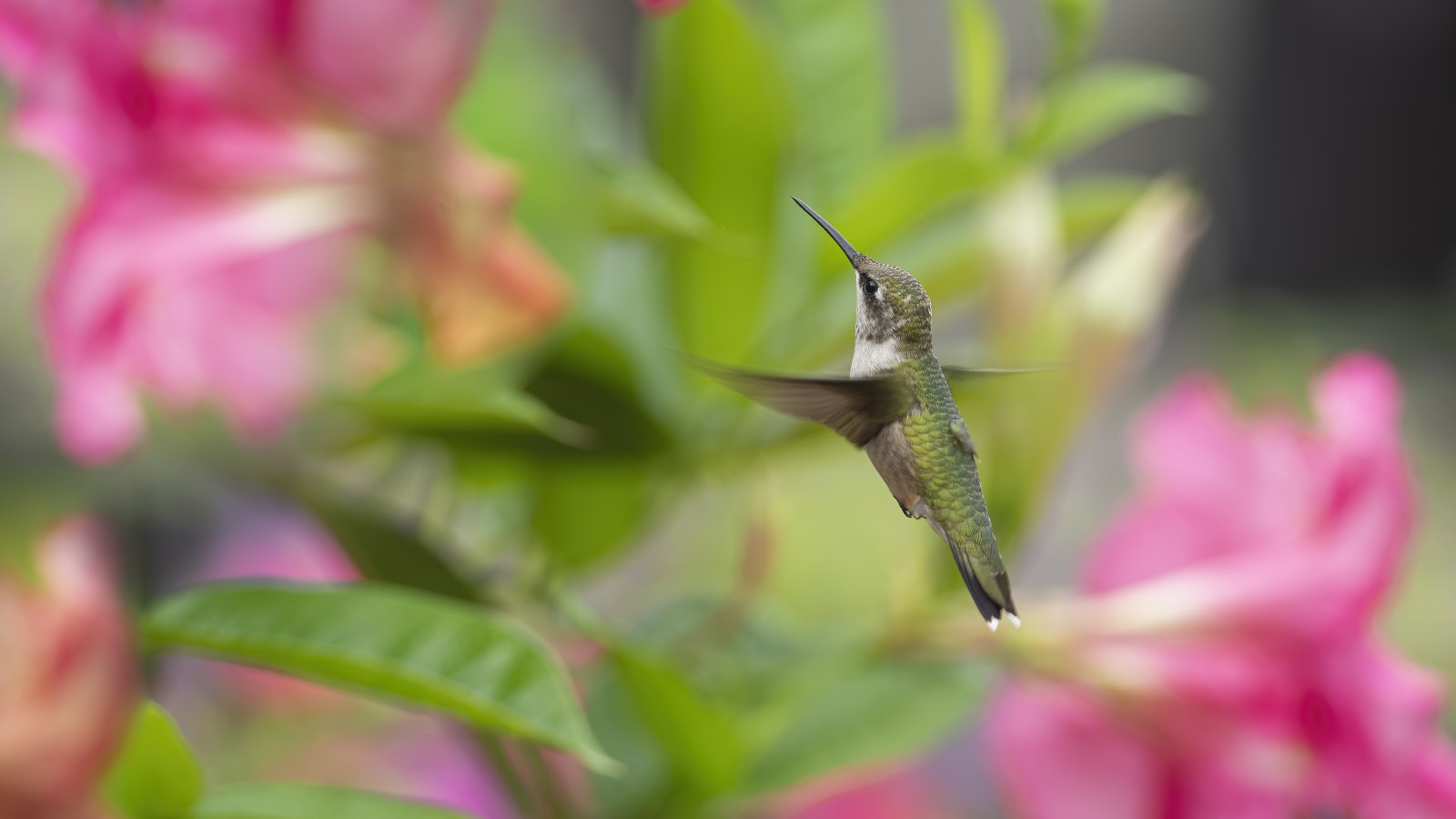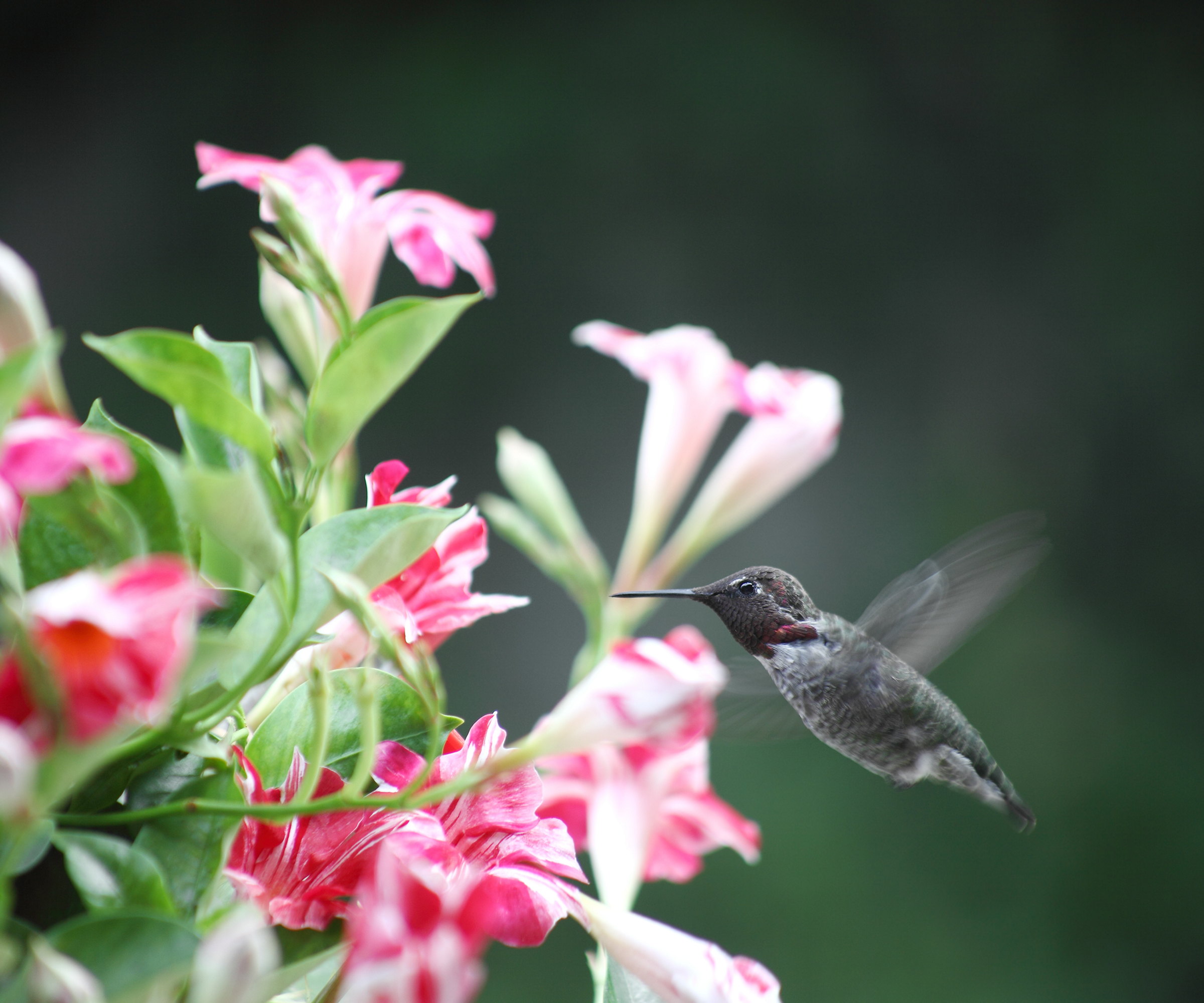
Hummingbirds are a welcome sight in any garden. These glorious creatures are not only beautiful, but they are prolific pollinators, visiting huge numbers of flowers each day in search of nectar.
Many climbers attract hummingbirds, though arguably none do it better than mandevilla. The tropical, showy climbers have the perfect flowers for hummingbirds, which adore the color and shape of the mandevilla blooms.
If you want a low-maintenance, high-impact climber that will attract lots of hummingbirds throughout the season, you should look no further than growing mandevilla. We take a close look at exactly why hummingbirds like mandevilla so much, and how you can care for the plant to get the most out of those attractive blooms.

Are hummingbirds attracted to mandevilla?
Mandevilla is a very popular flowering climber used in many people’s backyard ideas. Hailing from Central and South America, these tropical stunners are fast-growing climbing plants that can quickly cover a fence, arch, pergola, or wall for a show of bright, long-lasting flowers.
‘Mandevilla is a tropical vine grown for its vibrant, trumpet-shaped flowers that bloom throughout the warm months,’ says Tatiana Anderson, tropical plant expert and co-founder of Top Tropicals. ‘This fast-growing climber thrives in warm climates and adds a stunning display of color to gardens and patios.’
It is those vivid blooms that make mandevilla hugely attractive to hummingbirds. And it is not only hummingbirds that like mandevilla, the flowers are also adored by butterflies and bees.
The mandevilla flowers are highly visible and nectar-rich, two key characteristics in making them incredibly attractive to hummingbirds. They come in bright colors, including red, orange, pink, yellow, and white. Red blooms, in particular, are always a beacon for hummingbirds, while they are also drawn to bright colors like pink and orange.
If you are looking for a variety to attract hummingbirds, the good news is that there are many red options available among the over 160 known species of mandevilla.
‘Mandevillas are a tropical delight for every garden or patio,’ says Gail Pabst from the National Garden Bureau. ‘There are many red-flowered varieties available, including the likes of Madinia Elegant Velvet Red or Sun Parasol Giant Crimson, which are some of my favorites.’
Another key reason why hummingbirds like mandevilla is that the blooms are trumpet-shaped; this is the perfect shape for hummingbirds.
They have long beaks and tongues that can easily access the nectar contained inside trumpet blooms. It means, as well as mandevilla, other flowers with a similar shape, like trumpet vines, are welcome additions for hummingbirds.
Gail Pabst describes mandevilla as ‘low-maintenance vines that bloom continuously until fall’.
That long-blooming season must make them one of the best plants for pollinators, as you can potentially see large numbers of hummingbirds, butterflies, and bees throughout the year, including during the annual hummingbird migration in late summer.
How you grow the hummingbird magnet will depend on your climate. Mandevilla is a tender plant that is only perennial in the warmer climates of US hardiness zones 9 and above, but there are other options available.
You can grow mandevilla in pots in cooler climates, where you overwinter plants indoors and bring them outside for the summer months. Mandevilla can also be grown as annuals thanks to their fast-growing nature.
For happy mandevilla plants that flower profusely, plant them in a sunny spot and rich, well-draining soil.
Keep the soil consistently moist and feed the plants with a water-soluble balanced fertilizer every few weeks during the blooming season to encourage a long season of blooms.
Shop mandevilla plants
Sun Parasol Crimson is hardy to zones 10-11 and puts on a fantastic display of ruby-red blooms
Hardy to zones 9b-11, Stars & Stripes produces unique red, star-shaped petals, streaked with white stripes from early summer through to the first frost.
Pink Giant produces large, vivid blooms that stand out against the glossy green foliage.
Now you know why hummingbirds like mandevilla, you may feel inspired to do some planting that will attract more hummingbirds to your backyard. If so, we want to help.
These articles on the best perennials to attract hummingbirds and the best native spring flowers for hummingbirds reveal a selection of flowers to pick from. Adding these plants means color, texture, and fragrance, as well as bringing hummingbirds and other pollinators to your flower beds and borders.







